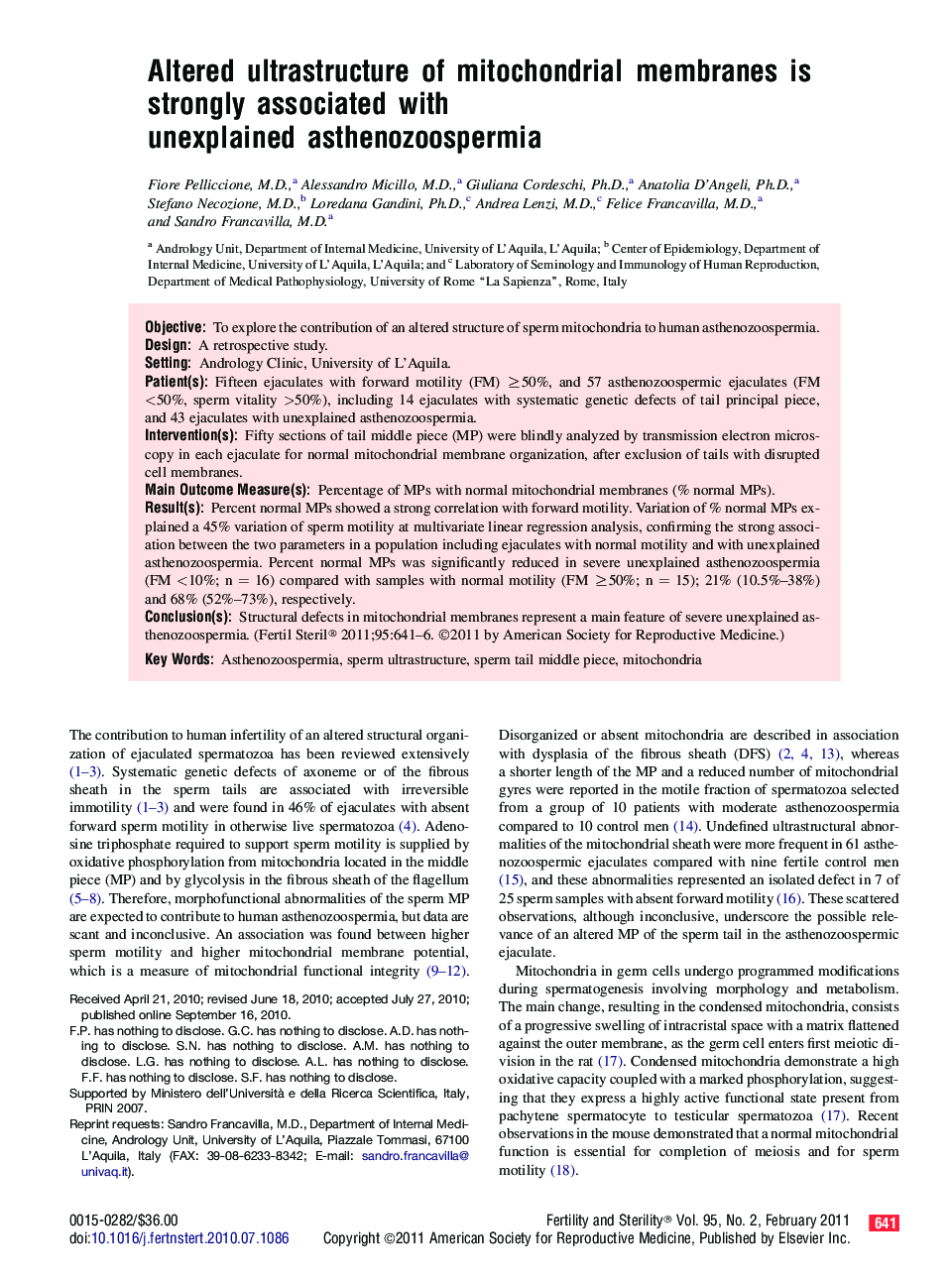| Article ID | Journal | Published Year | Pages | File Type |
|---|---|---|---|---|
| 3939558 | Fertility and Sterility | 2011 | 6 Pages |
ObjectiveTo explore the contribution of an altered structure of sperm mitochondria to human asthenozoospermia.DesignA retrospective study.SettingAndrology Clinic, University of L’Aquila.Patient(s)Fifteen ejaculates with forward motility (FM) ≥50%, and 57 asthenozoospermic ejaculates (FM <50%, sperm vitality >50%), including 14 ejaculates with systematic genetic defects of tail principal piece, and 43 ejaculates with unexplained asthenozoospermia.Intervention(s)Fifty sections of tail middle piece (MP) were blindly analyzed by transmission electron microscopy in each ejaculate for normal mitochondrial membrane organization, after exclusion of tails with disrupted cell membranes.Main Outcome Measure(s)Percentage of MPs with normal mitochondrial membranes (% normal MPs).Result(s)Percent normal MPs showed a strong correlation with forward motility. Variation of % normal MPs explained a 45% variation of sperm motility at multivariate linear regression analysis, confirming the strong association between the two parameters in a population including ejaculates with normal motility and with unexplained asthenozoospermia. Percent normal MPs was significantly reduced in severe unexplained asthenozoospermia (FM <10%; n = 16) compared with samples with normal motility (FM ≥50%; n = 15); 21% (10.5%–38%) and 68% (52%–73%), respectively.Conclusion(s)Structural defects in mitochondrial membranes represent a main feature of severe unexplained asthenozoospermia.
